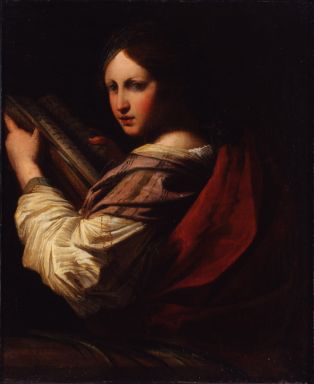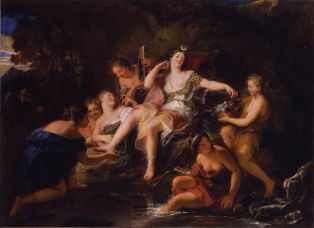- Découvrez les collections
- Notice d'oeuvre



Leyde, 1596 ; La Haye, 1656
1634
H. 40 cm ; l. 53 cm (sans cadre) ; H. 56 cm ; l. 70 cm (avec cadre)
M0536_L.I.75
Jan van Goyen est l’un des paysagistes emblématiques du Siècle d’or hollandais, avec Ruysdael ou van de Velde qui le forma à Haarlem en 1616. Natif des Pays-Bas, où il fait son apprentissage auprès de van Swanenburgh, van Goyen débute sa carrière de paysagiste dans la veine réaliste de van de Velde et dans l’esprit pittoresque de Jan Brueghel. Ce paysage se concentre sur les thèmes de l’eau et surtout du ciel. La lumière et les nuages se réfléchissent dans le miroir lacustre, envahissant la toile dans une harmonie épurée et sereine tendant à la monochromie. La terre ferme et l’activité humaine sont réduites, en marge de la composition. Le réalisme de van Goyen vient de sa compréhension des événements naturels, de la lumière et du vent : davantage qu’une représentation fidèle de son environnement, c’est son sentiment des paysages de polder entre Haarlem et Leyde qu’il souhaite traduire. Ce style novateur fait la réputation de van Goyen et sa postérité au XIXe siècle, notamment auprès des impressionnistes.
Jan van Goyen, along with Salomon van Ruysdael, is an emblematic landscape artist from the Dutch Golden Age. He studied art in Haarlem with Esaias van de Velde in 1616. A native of the Netherlands, where he apprenticed under Jacob van Swanenburgh, Jan van Goyen began his career as a landscape artist along the lines of realist painter Esaias van de Velde and in the spirit of the vibrantly styled paintings of Jan Brueghel. The themes of water and sky are the main focus of this landscape. Light and clouds are reflected in the lake, filling the canvas with a clean and calm--almost monochrome--harmony. The ground and human activity are minimised and set at the margins of the composition. Jan van Goyen’s sense of realism comes from his understanding of natural events, the light, and the wind. More than painting a faithful representation of his environment, he was interested in translating his perception of the low lands between Haarlem and Leiden. His innovative style earned him a reputation and posterity. He was particularly popular among nineteenth century impressionists.



 Copyright© WebMuseo 2017 - 2024
Copyright© WebMuseo 2017 - 2024